
Simon Dale and Jasmine Saville are concerned about the affects of fossil fuel use on the environment. To minimize their own environmental impact, they designed their own low-impact home in Wales. Simon and his father-in-law built it with the help of friends. In Simon’s words:
The house was built with maximum regard for the environment and by reciprocation gives us a unique opportunity to live close to nature. Being your own (have a go) architect is a lot of fun and allows you to create and enjoy something which is part of yourself and the land.
Main tools used: chainsaw, hammer and 1 inch chisel, little else really. Oh and by the way I am not a builder or carpenter, my experience is only having a go at one similar house 2yrs before and a bit of mucking around in between. This kind of building is accessible to anyone. My main relevant skills were being able bodied, having self belief and perseverance and a mate or two to give a lift now and again.
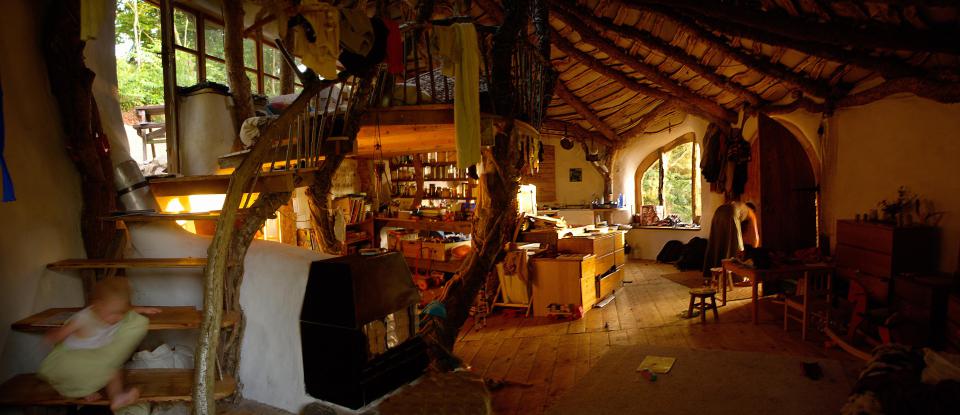
The house is about 50 m2 (540 ft2) in floor area, including a loft bedroom. It is insulated with straw bales in the floor, walls and roof. Although it is dug into a hillside and covered in earth, the home is open to a patio off the loft on the uphill side. Large windows opening out to the patio keep the house bright:
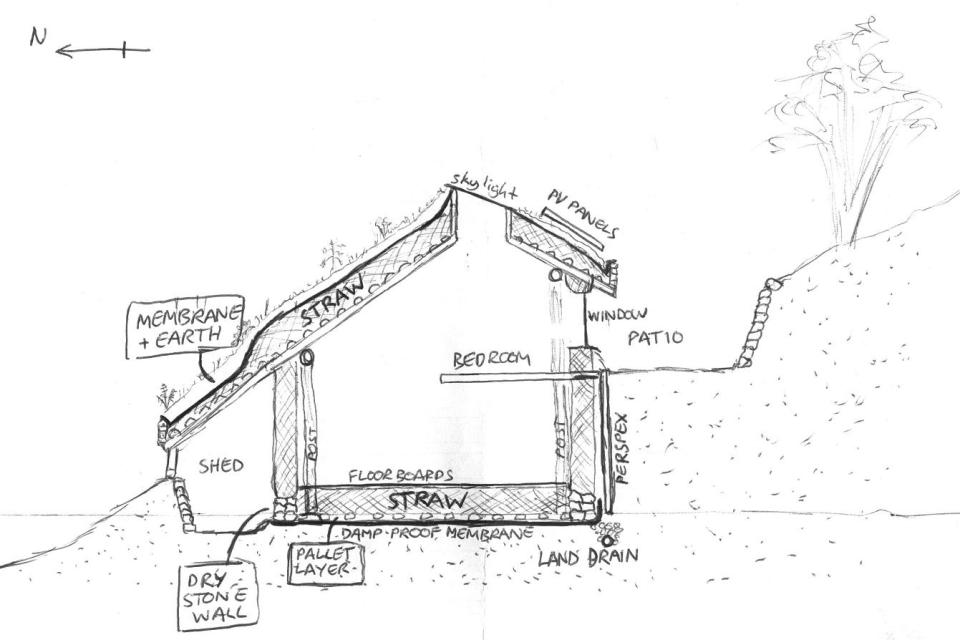
Dale says the main tools used were a chainsaw, hammer and one-inch chisel. And he writes that he is not a builder or carpenter, with little experience other than building a similar house two years prior. He believes that constructing this kind of building is accessible to anyone. He views this building as one part of a low-impact or permaculture approach to life.
Some key points of the design and construction:
• Dug into hillside for low visual impact and shelter
• Stone and mud from diggings used for retaining walls, foundations etc.
• Frame of oak thinnings (spare wood) from surrounding woodland
• Reciprocal roof rafters are structurally and aesthaetically fantastic and very easy to do
• Straw bales in floor, walls and roof for super-insulation and easy building
• Plastic sheet and mud/turf roof for low impact and ease
• Lime plaster on walls is breathable and low energy to manufacture (compared to cement)
• Reclaimed (scrap) wood for floors and fittings
• Anything you could possibly want is in a rubbish pile somewhere (windows, burner, plumbing, wiring…)
• Woodburner for heating – renewable and locally plentiful
• Flue goes through big stone/plaster lump to retain and slowly release heat
• Fridge is cooled by air coming underground through foundations
• Skylight in roof lets in natural feeling light
• Solar panels for lighting, music and computing
• Water by gravity from nearby spring
• Compost toilet
• Roof water collects in pond for garden etc.

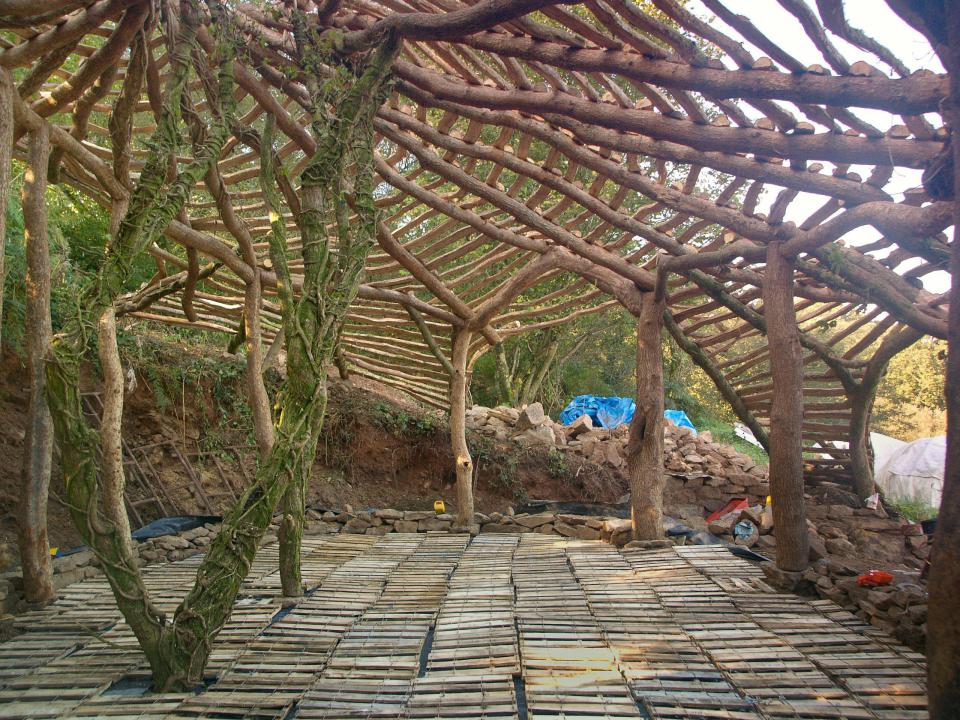
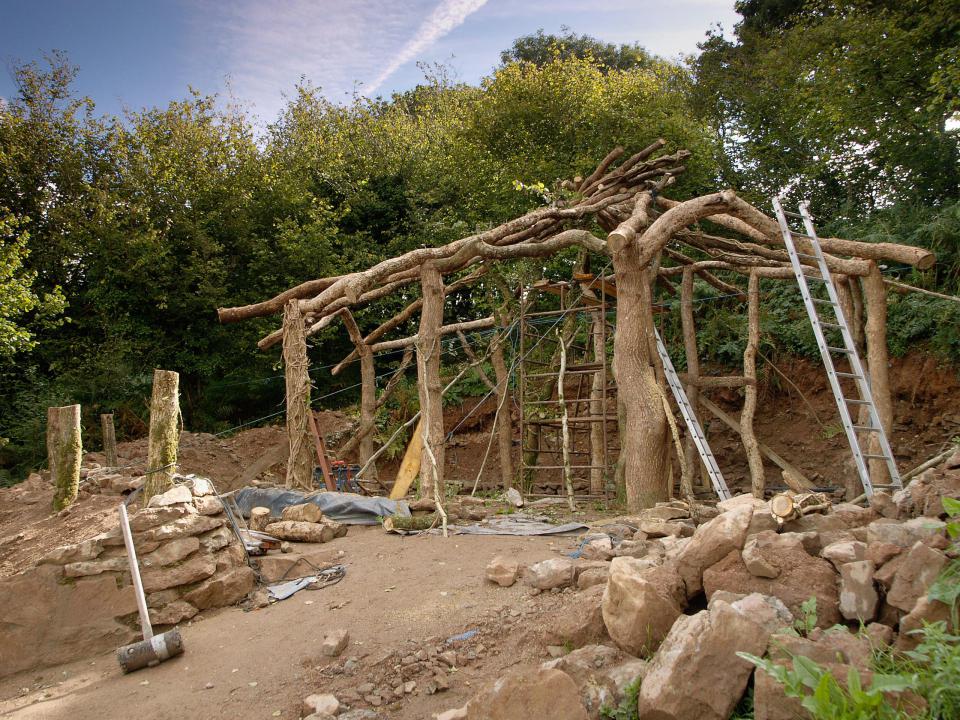
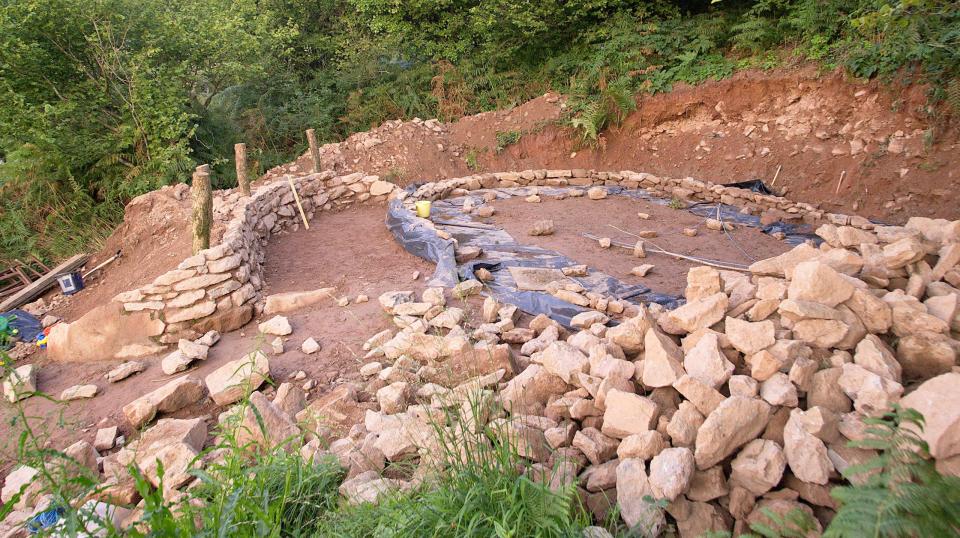



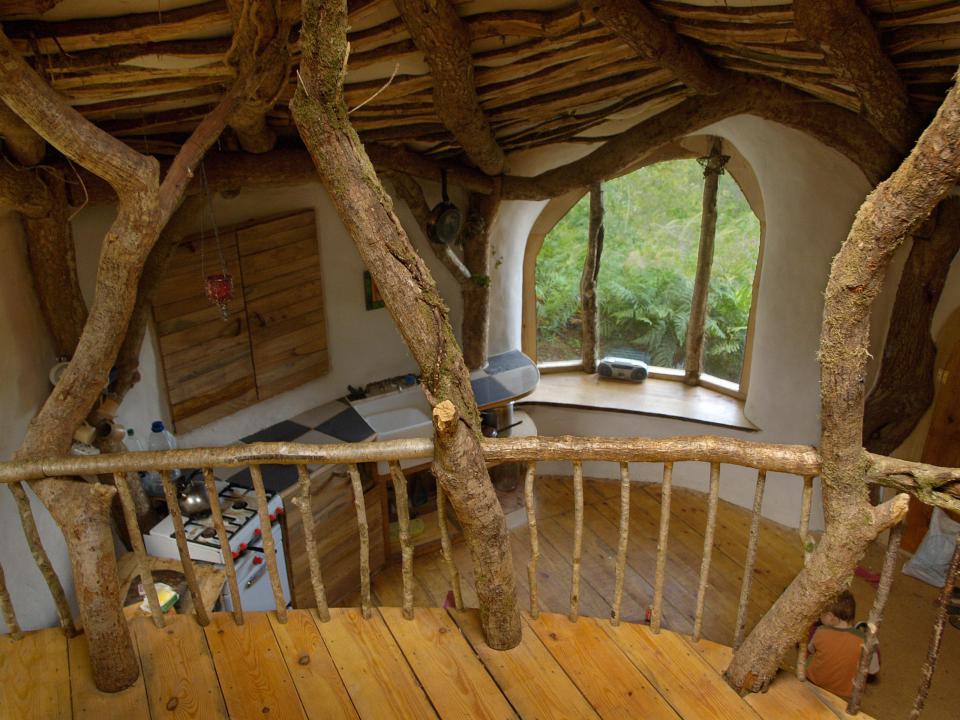
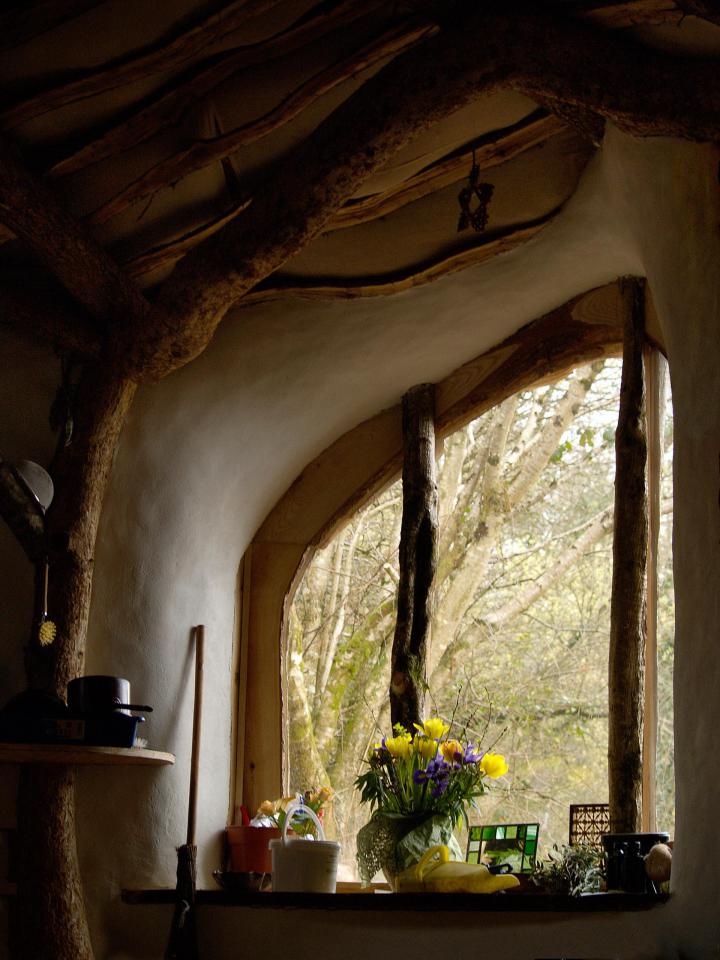

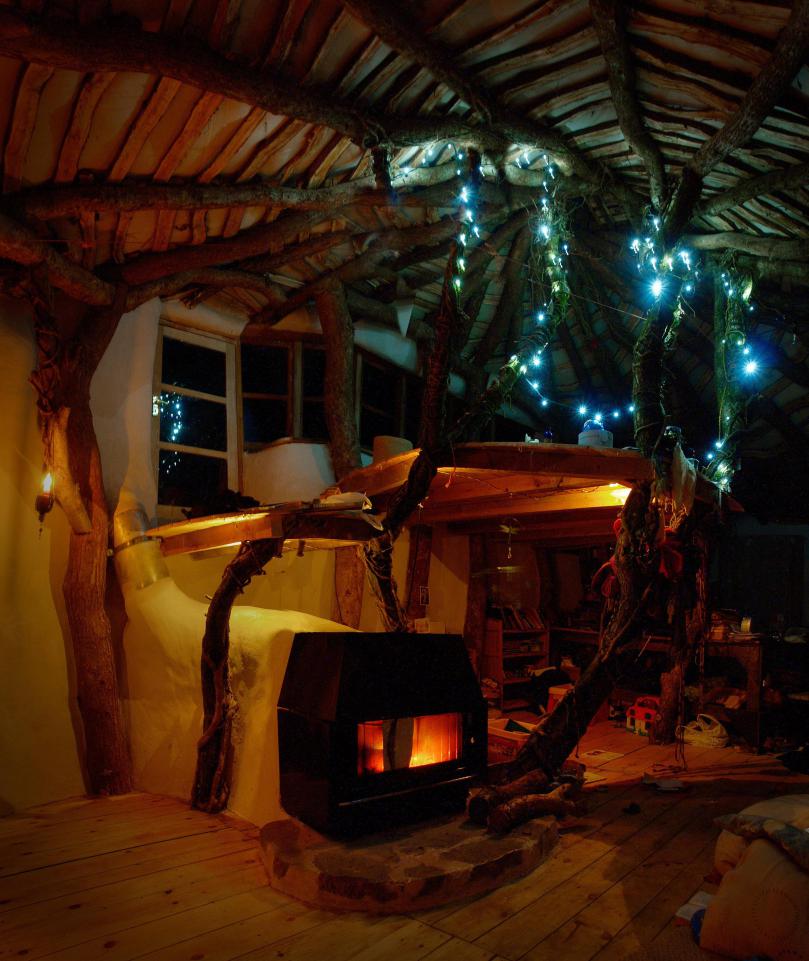


See relevant books:
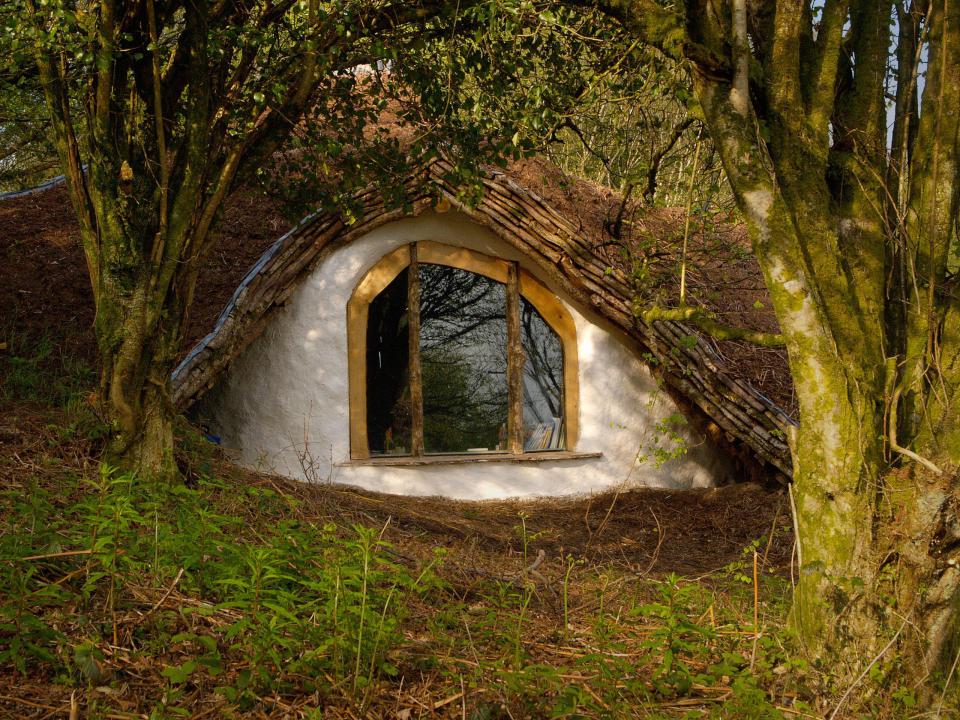
No Comments Yet